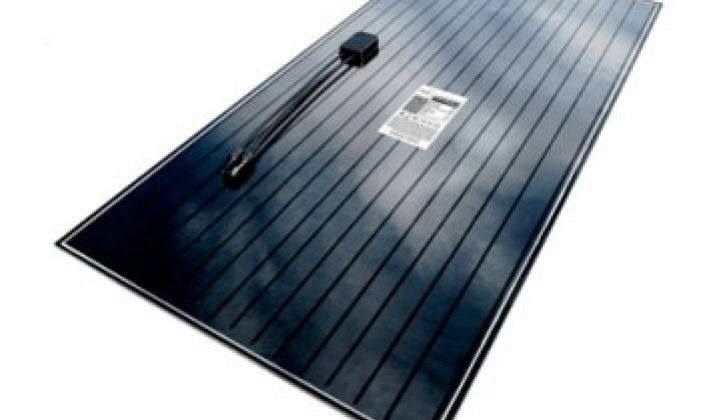Abound Solar's CEO Tom Tiller told me: "This company has the potential to be the next great solar company."
Helping in that quest is a recently announced $400 million loan guarantee from the U.S. DOE. That money is going to help get Abound from its current 65 megawatt capacity "up to about a gigawatt," according to the CEO.
I spoke with Tiller a few months ago, soon after he took the reins at the company. And I checked-in with a far more confident and knowledgeable Tiller on Tuesday.
He has the daunting challenge of ramping up a cadmium telluride photovoltaic company from a relative standing start to confront market behemoth First Solar and China's crystalline solar dragons. Tiller said, "We don't have to be cheaper than First Solar -- we have to be cheaper than the other manufacturers."
The cadmium telluride materials system is not a slam dunk. It took First Solar a few decades to get it right. Abound's technology is not new either -- it's based on 15 years of research at Colorado State University's Material Engineering Laboratory. Other solar firms looking into CdTe include PrimeStar, Solexant, Wakonda, Sunovia, Willard & Kelsey, and Xunlight26.
Abound, based in Loveland, Colo., already has 370 employees and is growing fast. The firm started production about nine months ago and expects to reach $1-per-watt manufacturing costs quickly with a 65-megawatt line in a factory in Longmont, Colo.
Tiller claims that Abound's patented technology is dramatically simpler than that used by First Solar. The CEO claims that First Solar uses six different steps in the semiconductor process and that Abound uses one machine. He also claims that his equipment has a 60 percent smaller footprint and a lower cost with their "close space sublimation process."
Cadmium Telluride and First Solar
You can't talk about Cadmium Telluride (CdTe) solar panels without bringing First Solar into the conversation. First Solar's execution and roadmap serve as an industry benchmark.
First Solar's FS Series 2 Modules put out between 70 and 77 watts of nominal power. Tiller says that Abound is commercially selling panels in the "high sixties, low seventies at about 10 percent efficiency" -- in other words, they are not that far away from First Solar numbers and are gaining fast.
There is a toxicity risk associated with cadmium telluride that First Solar has confronted with a 100-percent take-back program bonded by Swiss Re in the event that First Solar is not around in 20 or 30 years. Abound also has a recycling program and Tiller is appreciative of First Solar's leadership in spearheading the effort to address the toxicity issues of cad tel.
There is also a materials availability risk in the tellurium market, so firms may need to buy old lead or gold mines and set up recovery systems. There are some reliable (and not-so-reliable) voices on the web that speculate that First Solar and other CdTe PV firms will see price increases and material shortages in their raw material feedstocks.
The Loan, The Loan Process, and What Gets Done With the Money
I recently wrote an article on who gets left holding the bag if one of the recipients of a federal "loan guarantee" fails. Several readers insisted that these financial packages provided to the likes of Tesla, Fisker, Solyndra, Abengoa and Brightsource are "loan guarantees" from the government as opposed to traditional loans. Abound's CEO clarifies:
"In essence, it's a loan," said Tiller, adding: "The loan comes from the federal government." It's actually a "series of loans, according to the CEO, "as complex as the U.S. tax code with a seven-year repayment term." It's distributed on a milestone-basis, based "on a hundred milestones," according to Tiller.
The loan application process was a "comprehensive eighteen-month effort" that called for "a 600-page loan application, a 150-page independent engineering report and countless site visits." Added the CEO, "It's an excellent program from a taxpayer perspective."
Abound is going to use the funds to ramp from their current 65-megawatt capacity to about 200 megawatts in the current facility. Soon they will occupy and build-out a large facility in Indiana that will get the company near the one gigawatt mark.
"There is no way private equity markets would support that level of growth," claimed Tiller. He also noted that part of the terms require that the company raise $50 million in private equity, which should be a bit simpler with the government loan approved.
The firm has shipped 10 megawatts so far this year and Tiller anticipates shipping 35 to 40 megawatts in 2010.
"The project pipeline looks very strong," said the CEO.



